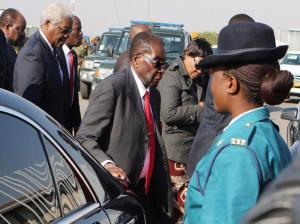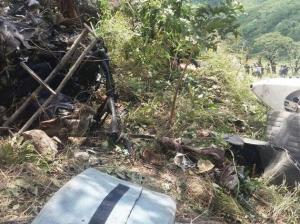Koalas under threat from STD chlamydia

Published: 2013 April 25 10:56:16 (3114 Views)
The koala is unique to Australia and is an important symbol of the country. But numbers are plummeting and the survival of koalas is under threat. One of the reasons is the sexually transmitted disease chlamydia.
One of the most common places to find koalas in Australia these days is in the hospital.
About 50 miles (80km) north of Brisbane, at the Australia Zoo Wildlife Hospital, a female koala is under a mild anaesthetic.
"She's quite an old girl - I think she's over 10 years," says veterinary surgeon Amber Gillett.
The koala is called Penny. Gillett puts some ultrasound gel in Penny's pouch and looks at the ultrasound machine.
She's checking her bladder for symptoms of chlamydia.
Outside the clinic are a series of open-air enclosures. These are the "koala wards" - and they are pretty much full all-year round.
Last year, Gillett and her team treated about 300 koalas for chlamydia - and so far, 2013 has been a busy year too.
In people, chlamydia is a common sexually transmitted disease. A different strain infects koalas, but it too can be spread sexually, and it's causing a devastating epidemic. In some parts of Australia, koala infection rates are as high as 90%.
Chlamydia affects male and female koalas, and even the little ones called joeys - who pick it up suckling from their mothers in the pouch.
It causes blindness and infertility in koalas - and can be fatal. Visible signs of infection include conjunctivitis, and a condition dubbed "dirty tail", caused by urinary tract infections and incontinence.
Some other animals are also infected with the disease but it is usually at low levels. It affects koalas more seriously and experts don't know why that is.
But, as in humans, the disease is treatable with antibiotics. This means keeping the koala in captivity for the duration of the treatment - usually a few months - before releasing it back into the wild.
And that's where Jon Hanger, a wildlife biologist, takes over. In a eucalyptus wood outside Brisbane, he unfurls an antenna.
Some of the animals here have been fitted with radio collars, and Hanger follows the signal up to the base of a tall tree.
- BBC
One of the most common places to find koalas in Australia these days is in the hospital.
About 50 miles (80km) north of Brisbane, at the Australia Zoo Wildlife Hospital, a female koala is under a mild anaesthetic.
"She's quite an old girl - I think she's over 10 years," says veterinary surgeon Amber Gillett.
The koala is called Penny. Gillett puts some ultrasound gel in Penny's pouch and looks at the ultrasound machine.
She's checking her bladder for symptoms of chlamydia.
Outside the clinic are a series of open-air enclosures. These are the "koala wards" - and they are pretty much full all-year round.
Last year, Gillett and her team treated about 300 koalas for chlamydia - and so far, 2013 has been a busy year too.
In people, chlamydia is a common sexually transmitted disease. A different strain infects koalas, but it too can be spread sexually, and it's causing a devastating epidemic. In some parts of Australia, koala infection rates are as high as 90%.
Chlamydia affects male and female koalas, and even the little ones called joeys - who pick it up suckling from their mothers in the pouch.
It causes blindness and infertility in koalas - and can be fatal. Visible signs of infection include conjunctivitis, and a condition dubbed "dirty tail", caused by urinary tract infections and incontinence.
Some other animals are also infected with the disease but it is usually at low levels. It affects koalas more seriously and experts don't know why that is.
But, as in humans, the disease is treatable with antibiotics. This means keeping the koala in captivity for the duration of the treatment - usually a few months - before releasing it back into the wild.
And that's where Jon Hanger, a wildlife biologist, takes over. In a eucalyptus wood outside Brisbane, he unfurls an antenna.
Some of the animals here have been fitted with radio collars, and Hanger follows the signal up to the base of a tall tree.
- BBC
You May Like These Videos
Comments
There are no comments.
Get Zim Metro Updates Alerts
Big Reads

Schoolgirl drops out after continuous 'sexual abuse' by teacher
by Staff Reporter | 2019 August 13 07:42:33
Mugabe Knows Nothing About The Zimbabwe Constitution: MP
by Staff Reporter | 2016 October 01 08:12:02
Zim's Protesting Graduates Risk Losing Degrees For Expressing Anger Against Mugabe
by Staff Reporter | 2016 October 01 07:57:08
Troubled Harare Giants Dynamos Falls Into Another Deep Crisis
by Own Correspondent | 2016 October 01 07:49:17
Grace Mugabe Grovels At Mnangagwa, Says I Did Not Ask Ubaba To Fire You
by Staff Reporter | 2016 October 01 07:31:48
Mugabe Attacks Mawarire, Claims The Exiled Pastor Failed To Divide Zimbabwe
by Staff Reporter | 2016 October 01 07:19:13
Shock As Local Bank Denies 'Rich' Mugabe's Son Heifty Credit
by Own Correspondent | 2016 September 30 19:14:54
Trouble For Police Officers Who Have Been Mercilessly Bludgeoning Protesters
by Staff Reporter | 2016 October 01 07:20:19
Mugabe "Home Coming" And "Thank You" Rally On Cards
by Own Correspondent | 2016 September 23 06:48:24
Prof Moyo Was Dumped By Western Embassies, Claims Mutsvangwa
by Staff Reporter | 2016 September 22 10:08:07
Broke RBZ Tracks Down Zimbabweans Living Outside The Country Over Taxi
by Staff Reporter | 2016 September 22 09:16:20
You Are Too Old To Lead, Aging Zim President Mugabe Told
by Own Correspondent | 2016 September 22 07:19:25
Anti-Corruption Commission Loses Property In Failed Probe
by Own Correspondent | 2016 September 20 03:18:19
SHOCKING:14 Year Old HIV-Positive Boy Rapes 7 Pupils
by Own Correspondent | 2016 September 20 00:04:55

 WATCH: Victims Narrate Ordeal After Being Clobbered By Riot Cops
WATCH: Victims Narrate Ordeal After Being Clobbered By Riot Cops FLASHBACK: Morgan Tsvangirai Won't Resign Despite Illness
FLASHBACK: Morgan Tsvangirai Won't Resign Despite Illness  Police Violently Beat Harare Protesters
Police Violently Beat Harare Protesters  Zimbabwean Man Who Was Shot By Tswana Employer Appeals For Help
Zimbabwean Man Who Was Shot By Tswana Employer Appeals For Help











.jpg)






